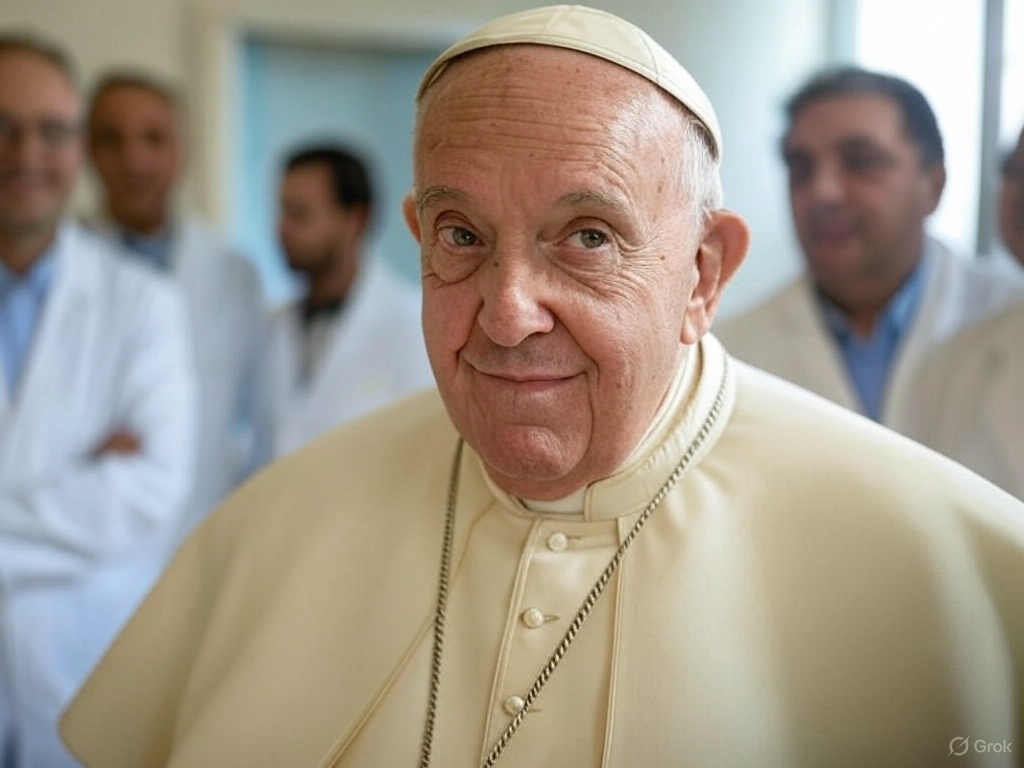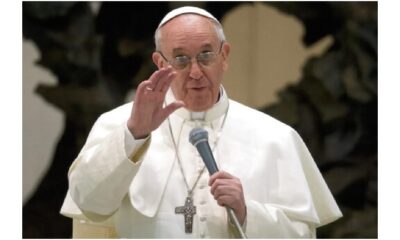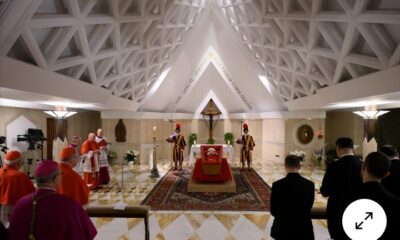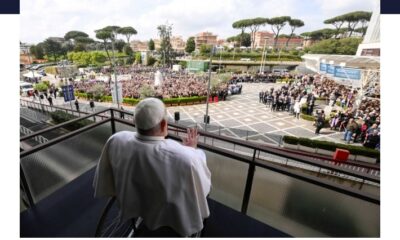NEWS
Breaking News:Pope Francis’ doctors considered stopping treatment to ‘let him go’ after serious breathing crisis that could lead to… see more details
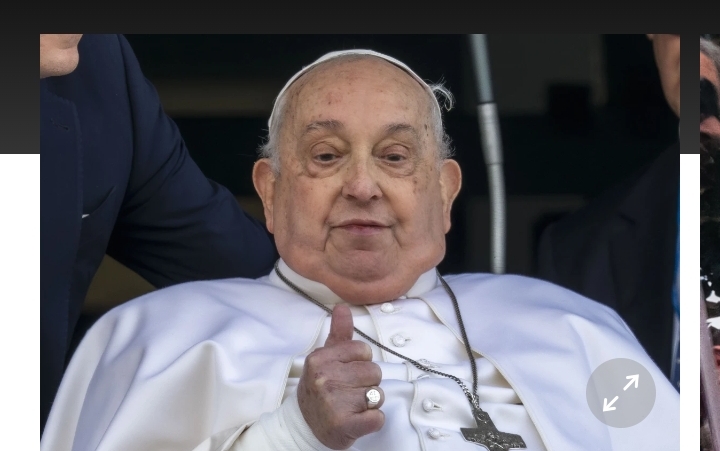
Breaking News:Pope Francis’ doctors considered stopping treatment to ‘let him go’ after serious breathing crisis that could lead to… see more details.
Pope Francis’ Life-and-Death Crisis: A Medical and Spiritual Turning Point
In a remarkable revelation that underscores both the fragility of human life and the resilience of faith, Pope Francis’ medical team recently faced a harrowing decision during a severe health crisis that nearly claimed the life of the 88-year-old pontiff. On February 28, 2025, a serious breathing emergency brought the leader of the Roman Catholic Church to the brink of death, prompting his doctors to contemplate suspending treatment and “letting him go.” Instead, they opted for an aggressive course of action that risked his organs but ultimately saved his life. This extraordinary episode, detailed by Dr. Sergio Alfieri, the physician coordinating the pope’s care, sheds light on the delicate balance between medical intervention and the human spirit, as well as the global outpouring of support that may have played a role in his survival.
The Crisis Unfolds:
Pope Francis was admitted to Rome’s Agostino Gemelli Polyclinic on February 14, 2025, after days of struggling with breathing difficulties, later diagnosed as bronchitis and bilateral pneumonia. Despite his worsening condition, the pope initially resisted hospitalization, likely driven by his commitment to his duties, including preparations for the Jubilee year. However, as his respiratory distress intensified, he relented and sought urgent medical attention. By the time he arrived at the hospital, he was in significant pain, though his characteristic humor reportedly returned within hours.
The situation took a dire turn on February 28, when Pope Francis suffered a severe bronchospasm—a sudden tightening of the airway muscles—during which he inhaled vomit. This life-threatening episode compromised his ability to breathe and plunged him into what Dr. Alfieri described as a night where survival seemed uncertain. “We understood, and he understood, that he might not survive the night,” Alfieri told the Milan daily Corriere della Sera in an interview published on March 25, 2025. The medical team faced a critical juncture: cease treatment and allow nature to take its course, or push forward with aggressive interventions despite the high risk of damaging vital organs such as the kidneys and bone marrow.
A Fateful Decision
The decision was not made lightly. Dr. Alfieri recounted the gravity of the moment: “We needed to choose whether to stop and let him go, or to push it and attempt with all of the possible drugs and treatments, taking the very high risk of damaging other organs.” The turning point came from an unexpected source—Massimiliano Strappetti, the pope’s personal healthcare assistant. Knowing Francis’ wishes intimately, Strappetti urged the team to “try everything” and not give up. This plea aligned with the pontiff’s own demeanor; despite his suffering, he remained alert, oriented, and cooperative throughout the ordeal, a testament to his mental fortitude.
Opting for the latter path, the medical team employed a barrage of treatments, including non-invasive aspiration to clear his airways and powerful medications to combat the infection and stabilize his condition. The risks were substantial—prolonged aggressive treatment could have led to irreversible damage to his kidneys or bone marrow—but the gamble paid off. “His body responded to the treatments, and the lung infection improved,” Alfieri noted, marveling at the outcome.
A Second Brush with Death:
The February 28 crisis was not the only time Pope Francis stared death in the face during his 38-day hospitalization. Three days later, on March 3, he endured a second life-and-death episode involving a pair of acute bronchospasms. Doctors again intervened, using a camera-equipped tube to remove mucus plugs from his airways, a procedure that yielded “abundant secretions” and alleviated the immediate danger. Throughout these interventions, official medical bulletins emphasized that the pope “always remained alert, oriented, and collaborative,” a remarkable detail given the severity of his condition.
The Power of Prayer and Resilience
Dr. Alfieri, a seasoned physician, offered a striking perspective on what may have contributed to Pope Francis’ survival. “I can say that twice the situation was lost, and then it happened like a miracle,” he said, attributing the pontiff’s recovery in part to the global prayers offered on his behalf. “In this case, the whole world was praying,” Alfieri observed, suggesting that this spiritual support, which he claimed is backed by scientific literature on the effects of prayer, played a role alongside medical efforts. Whether viewed through a lens of faith or coincidence, the pope’s ability to rebound from such dire circumstances left his medical team in awe.
Pope Francis himself appeared keenly aware of the stakes. Dr. Alfieri recounted moments of profound connection, such as when the pontiff held his hand for comfort during the most challenging periods. From the outset, Francis insisted on transparency, asking his doctors to “tell him the truth” and share accurate updates with the public. This openness was reflected in the Vatican’s regular health bulletins, which kept the world informed of his condition, even as he remained hospitalized for over five weeks—the longest absence from public view in his papacy.
A Frail Return and a Call for Rest
Pope Francis was discharged from Gemelli Hospital on March 23, 2025, appearing frail but determined as he waved to well-wishers from a window before returning to the Vatican. His release came with strict orders from his doctors: at least two months of convalescence, during which he must avoid large gatherings to allow his body to fully recover. The Vatican has not yet clarified whether he will participate in Holy Week activities leading up to Easter on April 20, and a planned meeting with King Charles III in April was postponed by mutual agreement to prioritize his rest.
Upon returning to his residence at the Santa Marta guesthouse, the pope began a regimen of triple therapy—oral medications, respiratory support, and physiotherapy—under the constant care of nurses and assistance from his private secretaries. Vatican sources reported that he was “very happy to be back home,” a sentiment echoed in his continued good humor. During his hospital stay, he had quipped to Alfieri, “Good morning, holy son!” in response to a greeting, and urged those around him to “not forget to live and maintain good humor.”
Even in his weakened state, Pope Francis used his experience to connect with the suffering of others. In a text prepared for his Angelus prayer on March 2, delivered from the hospital, he called for peace in conflict zones like Ukraine, Palestine, Israel, Lebanon, Myanmar, Sudan, and Kivu, declaring that “war appears even more absurd” from his bedside. He framed his illness as an “opportunity to share in body and spirit the condition of so many sick and suffering people,” transforming personal frailty into a universal message of solidarity.
Implications for the Papacy:
This health crisis, the most severe of Pope Francis’ tenure, has reignited discussions about his longevity and the future of the papacy. At 88, he is the oldest pope in over a century to lead the Church, and his repeated hospitalizations in recent years—most notably for abdominal surgery in 2023—have fueled speculation about whether he might consider resignation, as his predecessor Pope Benedict XVI did in 2013. However, Francis has consistently downplayed such notions, often surprising observers with his resilience and determination to continue his mission.
For now, the focus remains on his recovery. The Catholic faithful, who gathered in prayer outside St. Peter’s Basilica during his hospitalization, and the broader global community that watched his ordeal unfold, are left with a renewed appreciation for the man who, against the odds, emerged from the shadow of death. As Dr. Alfieri put it, “He was a very cooperative patient,” a description that encapsulates both his role in his own survival and his enduring commitment to his flock.
Conclusion:
Pope Francis’ near-death experience in early 2025 is a testament to the interplay of medical science, human will, and, for many, divine intervention. His doctors’ decision to press forward with aggressive treatment, spurred by his assistant’s insistence and bolstered by worldwide prayers, pulled him back from the precipice not once, but twice. As he embarks on a period of rest and rehabilitation, the world watches with bated breath, hopeful that this resilient shepherd will continue to guide his Church through an era of uncertainty. In the words of the pontiff himself, spoken during his darkest hours, “I am still alive”—a simple yet profound declaration of triumph over adversity.

